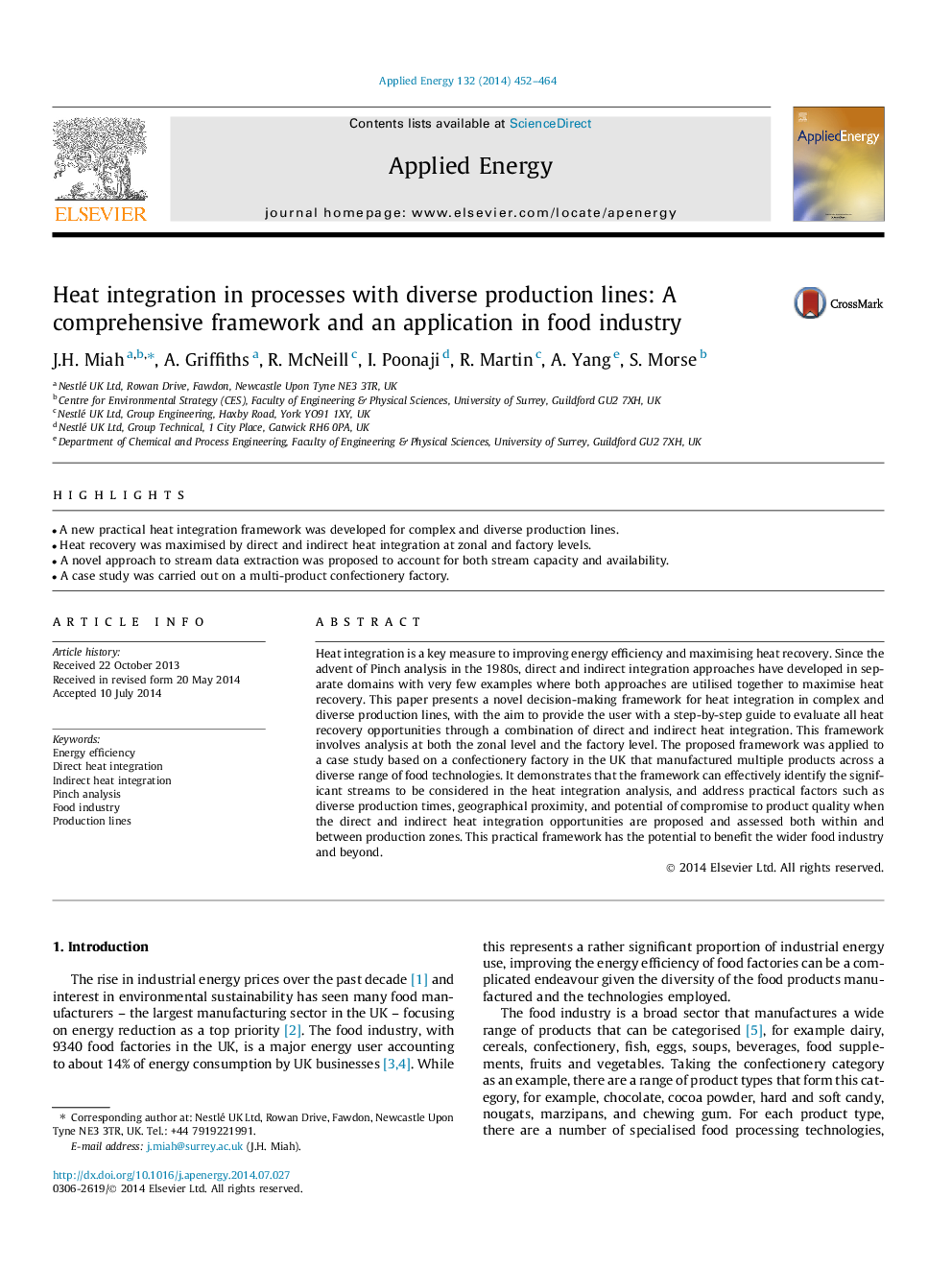| Article ID | Journal | Published Year | Pages | File Type |
|---|---|---|---|---|
| 6689878 | Applied Energy | 2014 | 13 Pages |
Abstract
Heat integration is a key measure to improving energy efficiency and maximising heat recovery. Since the advent of Pinch analysis in the 1980s, direct and indirect integration approaches have developed in separate domains with very few examples where both approaches are utilised together to maximise heat recovery. This paper presents a novel decision-making framework for heat integration in complex and diverse production lines, with the aim to provide the user with a step-by-step guide to evaluate all heat recovery opportunities through a combination of direct and indirect heat integration. This framework involves analysis at both the zonal level and the factory level. The proposed framework was applied to a case study based on a confectionery factory in the UK that manufactured multiple products across a diverse range of food technologies. It demonstrates that the framework can effectively identify the significant streams to be considered in the heat integration analysis, and address practical factors such as diverse production times, geographical proximity, and potential of compromise to product quality when the direct and indirect heat integration opportunities are proposed and assessed both within and between production zones. This practical framework has the potential to benefit the wider food industry and beyond.
Related Topics
Physical Sciences and Engineering
Energy
Energy Engineering and Power Technology
Authors
J.H. Miah, A. Griffiths, R. McNeill, I. Poonaji, R. Martin, A. Yang, S. Morse,
